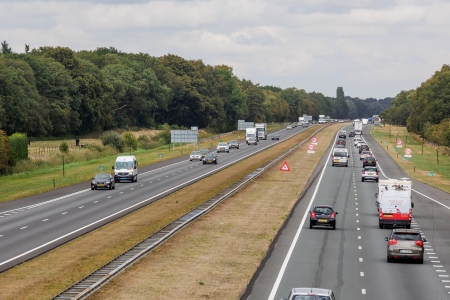The main distinction in run-off-road crashes is whether or not drivers lose control of their vehicles. When control is lost, the vehicle skids. Studies from Australia and New Zealand show that drivers that have lost control enter the roadside at a greater angle, and have a significantly larger encroachment of lateral displacement on the roadside than drivers that have maintained control. Cars that have skidded, go beyond the clear zone (see the question What does a safe roadside (or outer verge) look like?), as is shown in simulations [6] [7]. In run-off-road crashes where control is maintained, the angle of entry is limited; in most cases, these cars stay within the clear zone [6] [7] [8]. Thus, if the roadside is provided with the desired clear zone, drivers are more likely to come to a stop safely on the roadside or to correct their course when control is maintained.
It is not known what share of run-off-road crashes in the Netherlands involves loss or retention of control. However, in-depth research into fatal crashes on national roads shows that a relatively large share (more than 15% in 2015-2019) of road deaths due to run-off-road crashes resulted from a collision with an obstacle outside the clear zone [9]. These road deaths could therefore have involved loss of control.
